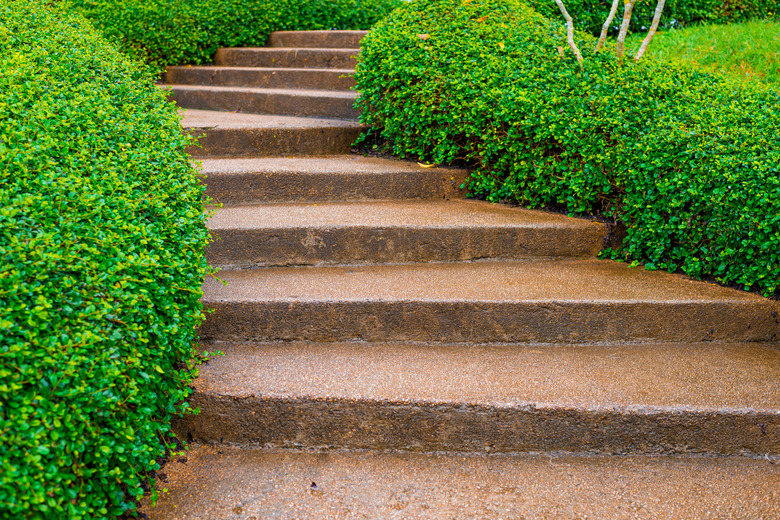Can You Install Pavers On Top Of Existing Concrete Steps?
Concrete steps provide a long-lasting functional surface to and from porches or raised patios, but they can look dull and unattractive. You can add style by laying pavers over both the face and surface of the steps. It isn't difficult, but it requires using mortar to keep them in place. Keep in mind that, because the tread height will rise, the top and bottom step will relate differently to existing landings, resulting in not just awkwardness, but possibly safety issues. Addressing new landings, possibly with the same pavers, may be your best bet.
Mortaring Is Essential
Setting pavers on concrete steps is dangerous if they are not locked in place by mortar. The mortar needs to form a strong bond with your existing concrete, which means that all debris must be removed. Use a srub brush and a hose or power washer if dirt is embedded in the surface. Use a mild detergent or stain remover if necessary and rinse off all solutions. The best way to ensure a smooth installation is to dry-lay your pavers before mixing the mortar. Fit them over the horizontal and vertical face of the steps and use chalk to mark where they need to be cut to fit.
Different Cutting Methods
Pavers are molded or cut from concrete, natural stone or brick, and there are a few ways you can cut them. Use a paver splitter or diamond-tipped blade and an electric saw for a quick, clean cut. If you don't have access to either, use a cold chisel and a hammer to score the cut line on both sides. Thin pavers will snap in half once the score line is deep enough. For thicker pavers, place the chisel in the center of the scored line, and hit the chisel with a sledge hammer to split the paver. Wear safety goggles to protect your eyes regardless of the method you use.
Installation Starts at the Top
The installation process must begin at the top of the stairs, using mortar that has the consistency of peanut butter. Set the pavers vertically over the face of the top stair, and then set the horizontal part of the top step. You only need ¼- to ½-inch of mortar to secure the pavers. Always check that the surface and vertical face is level before moving on to the next step. Do not leave any gaps between pavers. Press them flush against each other as sand rather than grout will cushion them from each other.
Sealing and Maintenance
Though concrete provides a strong base for pavers, you should seal them in order to slow fading and prevent weather damage. Seal the steps once masonry sand is packed into the crevices between each paver to help hold the sand in place. Before reapplying the sealant every other year, plan to refill the crevices with sand as it wears away over time.
